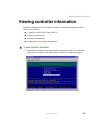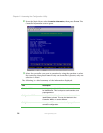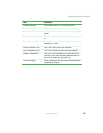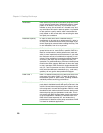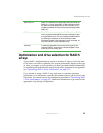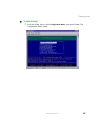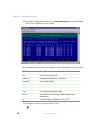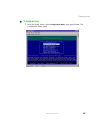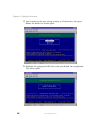
21
Understanding arrays
www.gateway.com
Optimization and drive selection for RAID 5
arrays
Typical RAID 5 implementations require a number of steps to write the data
to the drives. In order to optimize your system performance based on the type
of writes you expect in your operation, we have provided detailed information
on optimizing the performance using full strip write operations in an appendix
(see “Optimizing RAID 5 Write Performance” on page 227).
If you intend to setup a RAID 5 array and want to consider optimum
performance, you will need to consider the number of drives, parity drives, and
chunk size. You should review the information provided in “Optimizing RAID
5 Write Performance” on page 227. Additional information is provided at the
appropriate step during configuration.
RAID Level 10 RAID 10 is defined as mirrored stripe sets (also known as
RAID 0+1). You can build RAID 10 either directly through
the RAID controller (depending on the controller) or by
combining software mirroring and controller striping (called
RAID 01).
RAID Level 50 This RAID level is a combination of RAID level 5 and RAID
level 0. Individual smaller RAID 5 arrays are striped, to give
a single RAID 50 array. This can increase the performance
by allowing the controller to more efficiently cluster
commands together. Fault tolerance is also increased, as
one drive can fail in each individual array.
Sub-array In RAID 50 applications, this is the name given to the
individual RAID 5 arrays that are striped together. Each
sub-array has one parity drive.



